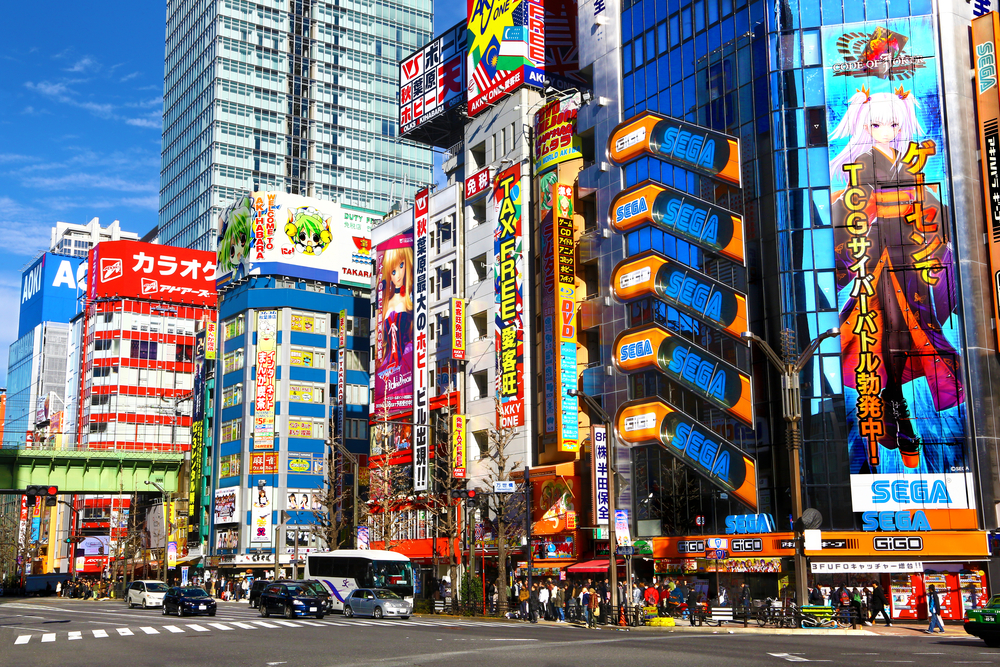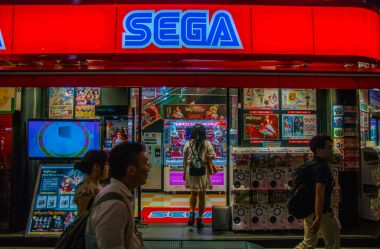
Japan and its capital, Tokyo, are places with a culture that goes back a long way and a lot of traditions. Games are also particularly important. The state’s approximately 126.8 million inhabitants love little more than to relax with electronic and non-electronic games. Especially from the Meiji period, which lasted until 1919, Japan opened up to intercultural influences, which was also reflected in the entertainment and travel culture. How shogi became pachinko and pachinko arcade halls and why holidaymakers are so fascinated by them.
Long history
The Land of the Rising Sun already had a rich entertainment culture over 1,000 years ago. Shogi, for example, is one of the traditional Japanese games imported from China in the 8th century and is considered to be part of the same family as Western chess. With about eight hundred game pieces in the “ultimate” form, it is one of the most complex games ever. Go, a two-player strategy game, has just as long a history as Sugoroku (translated as “A Pair of Sixes”), a Japanese dice game. Games were not only played at court, but also among the general population. Due to Japan’s geographical location as an island nation, the influence of other countries on culture was relatively limited. Only from China were many cultural customs and games adopted. So it’s no wonder that China always attracts tourists .
Opening up to the West
But from the middle of the 19th century, Japan opened up to Western influences in the course of the Meiji restoration, as Monsieur-Becker writes. The combination of tradition and modernity that emerged from this opening is still characteristic of the Land of the Rising Sun today: In Japan, brand-modern influences live alongside millennia-old culture, without the inhabitants being bothered by these contrasts. This is important to understand the impact of technology on the Japanese entertainment industry. Hanafuda was also affected by these influences. Hanafuda are Japanese playing cards, the name can be translated as “flower cards”.
Pachinko boom
From the 20th century onwards, it was pachinko games that dominated the Japanese gaming scene. The first pachinko machines were built as early as the 1920s and were very popular, especially in Tokyo and other major cities. Pachinko is a mixture of a slot machine and an arcade machine. Players buy small metal balls, fill them into the machine and can then use a lever to determine how fast they are transported to the playing field. The aim is to transport the balls through a labyrinth into special holes in order to dust off winnings. Over the decades, the machines became more and more complex and technical and an arcade culture developed around pachinko from the 1980s onwards. In 1994, the Japanese pachinko market was valued at about $300 billion. Tourists in particular are fascinated by the loud and brightly lit pachinko halls. Nowadays, almost every district of Tokyo has the popular arcades, often not far from quiet temples or parks. These contrasts are usually among the reasons why cities like Tokyo or Kyoto are so popular with travelers.
Tradition and modernity in electronic games
After all, it was once again the combination of tradition (pachinko) and modernity (electronic games) that allowed Japanese gaming culture to blossom to new life: Japanese arcade games flourished around 1980. Whether Pac-Man, Donkey Kong or Mario Brothers: They all had their origins in the arcade halls, where they lured customers in droves to the machines to insert yen coins. And this time, the popularity of Japanese games was no longer limited to East Asia: companies like Namco, Nintendo, for example, with the current console Nintendo Switch, which can be bought on Amazon, and later Sony, exported their video games to the West and had an ever-increasing influence on the culture there. Than
And you can see that on every corner and in many areas: Western arcade halls, which still exist sporadically in our country, are strongly inspired by their Japanese counterparts, for example. If you play arcade games today, you will almost certainly enjoy a product from Japan. Whether games from Nintendo, Namco or Sega: arcades are also very Japanese in our country. The principle of arcade gaming, namely offering easy-to-learn games that users want to play again and again in order to get better and have fun, has also become one of the foundations of today’s video game market – all over the world. Video games now generate annual sales of 1.08 billion euros in Germany, according to Statista. Another area is also closely related to the Japanese arcade halls: Online casinos, which now generate more than one billion euros in sales annually in Germany , have already transferred the game principle of the arcade to games such as poker and roulette. A short game round in between, plus a large selection of machines and a modern design. How diverse the offer is due to the high demand can be seen well with providers such as Betway Online Casino. And most recently, it was also the Japanese video games and arcade hits that paved the way for a whole range of other Eastern influences in Europe: manga and anime, for example, became known in Germany.
Vibrant arcade culture for tourists

While there are hardly any arcade halls left in the West today, the arcade in Japan is as alive as ever. If you want to marvel at the rich gaming culture in Japan as a vacationer, it is best to visit Tokyo’s Akihabara district: The district is full of arcade halls, pachinko halls and other electronic and non-electronic entertainment options, as Wanderweib writes. The mega-city, which has a total of around 13.92 million inhabitants, also has a lot to offer in other districts. It can be easily reached by train. And Kyoto, the headquarters of the traditional company Nintendo and the cultural center of Japan, also offers a wide selection from Go to pachinko to slot machines.
Result
Japan’s gaming culture is extensive, rooted in tradition and at the same time modern – this also fascinates holidaymakers. It has been a long way from games imported from China such as shogi, to hanafuda cards and pachinko, to modern arcade halls and video games. It is always impressive how Japan has been able to preserve its own identity without closing itself off from foreign influences. Especially the shrill colors, colorful lights and loud money and sound noises of the Japanese arcade halls attract a large number of tourists every year. Our tip for game fans is: Akihabara.

